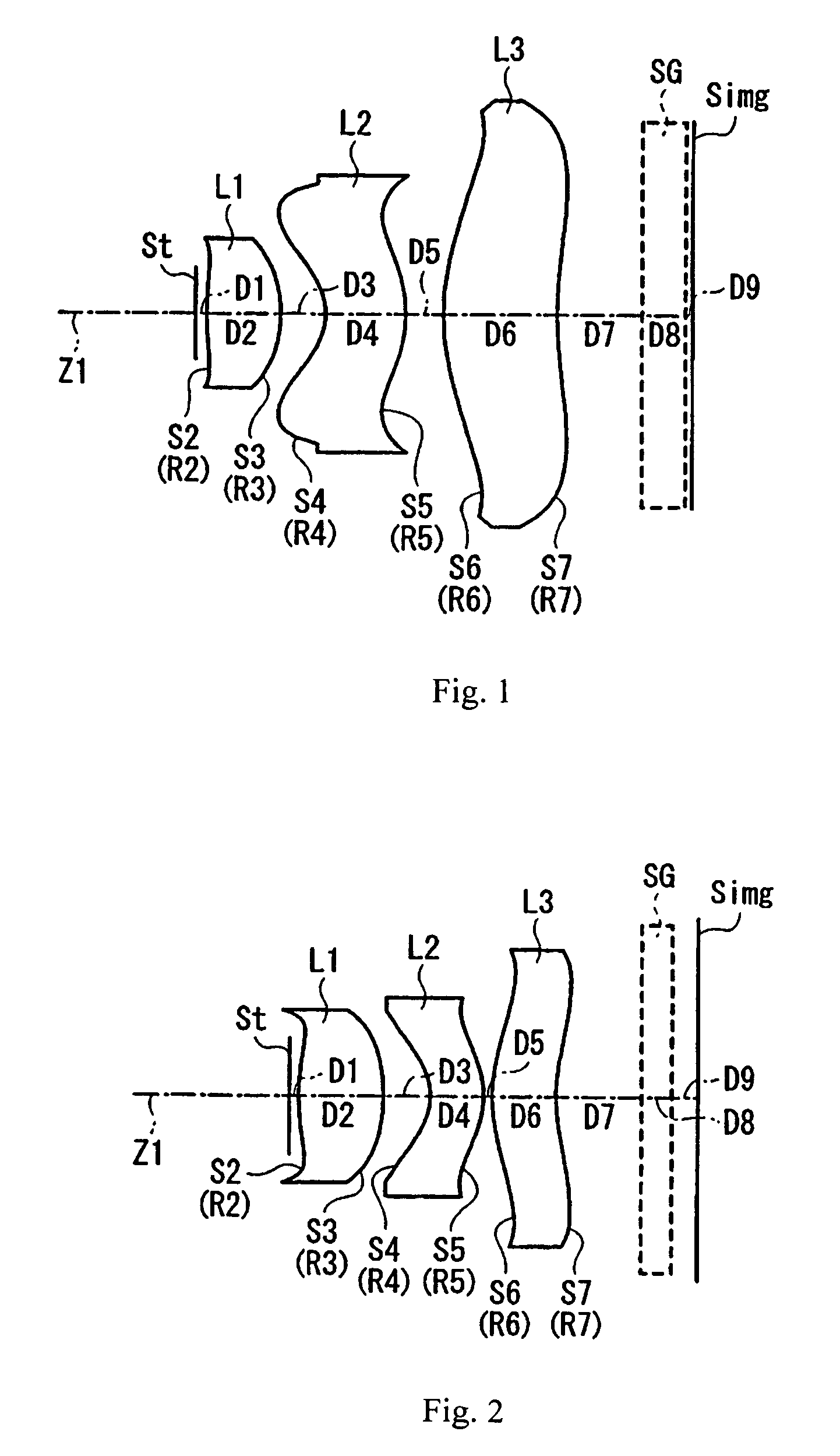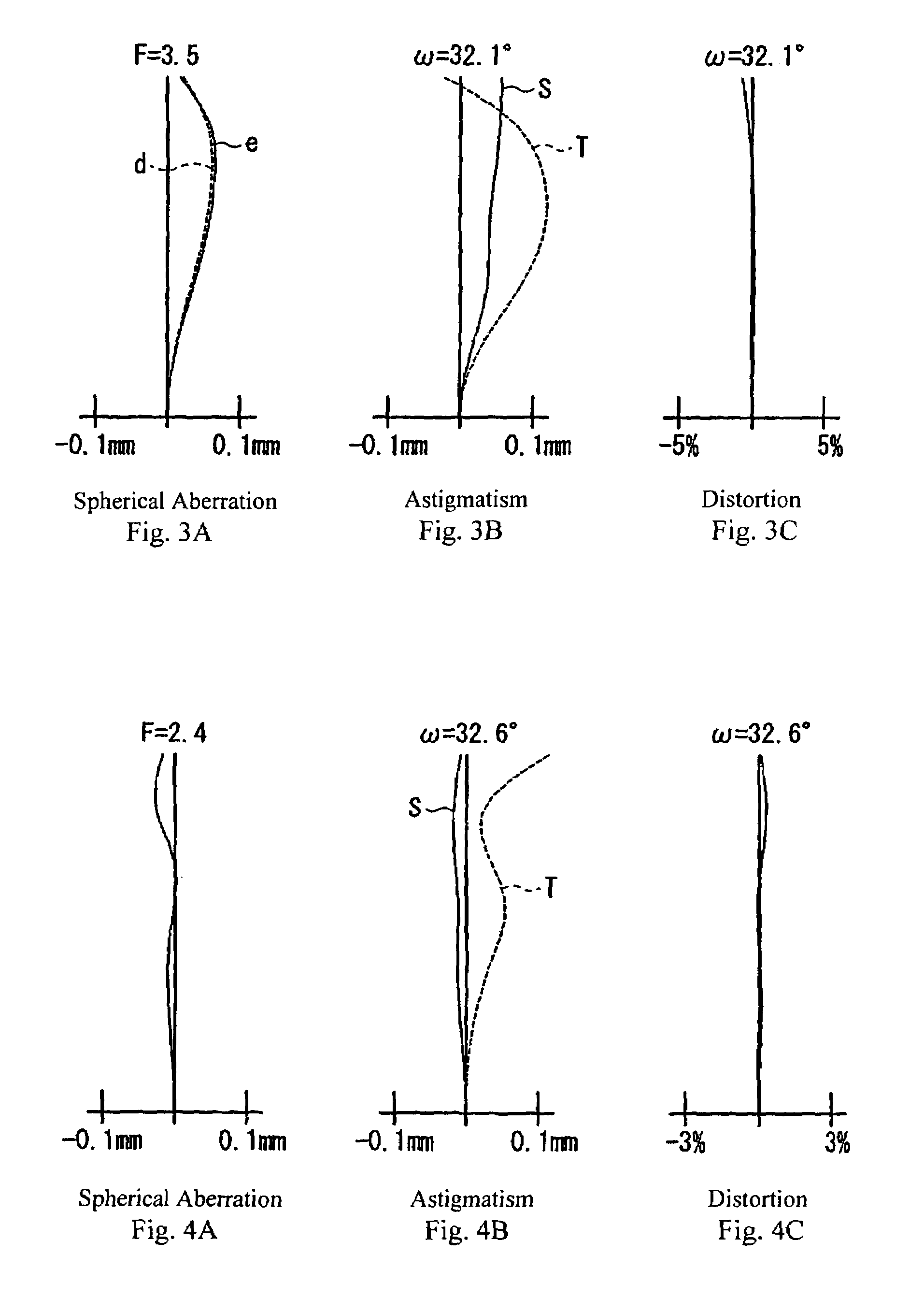Imaging lens
- Summary
- Abstract
- Description
- Claims
- Application Information
AI Technical Summary
Benefits of technology
Problems solved by technology
Method used
Image
Examples
embodiment 1
[0041]FIG. 1 shows Embodiment 1 of the present invention. Table 1 below lists the surface number #, in order from the object side, the radius of curvature R (in mm) of each surface near the optical axis, the on-axis surface spacing D (in mm), as well as the refractive index Nd and the Abbe number νd (both at the d-line of 587.6 nm) of each lens element for Embodiment 1. Listed in the bottom portion of Table 1 are the focal length f, the f-number FNO, the maximum image angle 2ω, and the on-axis distance TCL from the diaphragm stop St to the image plane Simg for Embodiment 1. The radius of curvature is infinity (∞) at the planar surfaces of the cover plate SG.
[0042]
TABLE 1#RDNdνd1 (stop)∞0.143624.06450.95701.531155.53−1.69280.58354−0.73801.01931.583630.25−1.55620.473462.76431.46871.531155.574.50841.11618∞0.55801.51689∞0.0958f = 4.0 mmFNO = 3.52ω = 64.2°TCL = 6.4 mm
[0043]Table 2 below lists the values of the constants K, and A3–A10 used in Equation (A) above for each of the aspheric le...
embodiment 2
[0049]FIG. 2 shows Embodiment 2 of the present invention. Table 4 below lists the surface number #, in order from the object side, the radius of curvature R (in mm) of each surface near the optical axis, the on-axis surface spacing D (in mm), as well as the refractive index Nd and the Abbe number νd (both at the d-line of 587.6 nm) of each lens element for Embodiment 2. Listed in the bottom portion of Table 4 are the focal length f, the f-number FNO, the maximum image angle 2ω, and the on-axis distance from the diaphragm stop St to the image plane Simg (TCL) for Embodiment 2. The radius of curvature is infinity (∞) at the planar surfaces of the cover plate SG.
[0050]
TABLE 4#RDNdνd1 (stop)∞0.126122.86431.11611.531155.53−2.37390.61844−0.65990.68221.583630.25−1.13650.113661.72870.85981.531155.571.91511.15298∞0.40001.51689∞0.3393f = 3.7 mmFNO = 2.42ω = 65.2°TCL = 5.4 mm
[0051]Table 5 below lists the values of the constants K, and A3–A10 used in Equation (A) above for each of the aspheric ...
PUM
 Login to View More
Login to View More Abstract
Description
Claims
Application Information
 Login to View More
Login to View More - R&D
- Intellectual Property
- Life Sciences
- Materials
- Tech Scout
- Unparalleled Data Quality
- Higher Quality Content
- 60% Fewer Hallucinations
Browse by: Latest US Patents, China's latest patents, Technical Efficacy Thesaurus, Application Domain, Technology Topic, Popular Technical Reports.
© 2025 PatSnap. All rights reserved.Legal|Privacy policy|Modern Slavery Act Transparency Statement|Sitemap|About US| Contact US: help@patsnap.com



